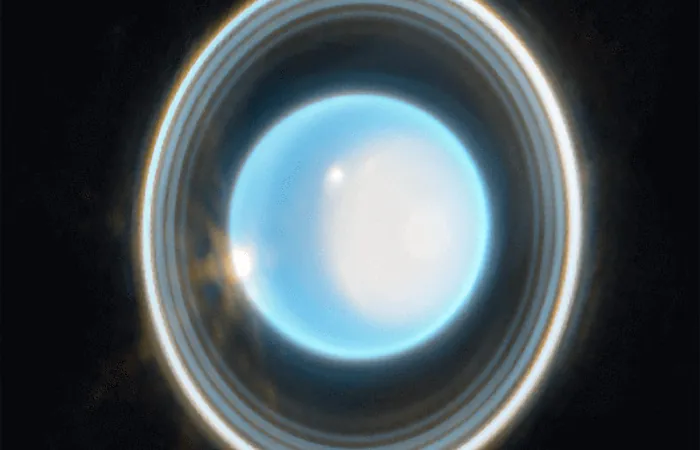
Are There Hidden Oceans on Uranus' Moons? NASA Uses Wobbling to Find Out!
2024-11-27
Author: Sarah
Are There Hidden Oceans on Uranus' Moons? NASA Uses Wobbling to Find Out!
In an exciting new study, researchers are investigating the possibility of subsurface oceans lurking beneath the icy surfaces of some of Uranus' moons. By analyzing the moons' libration—essentially the wobbling that occurs during rotation—the team aims to unlock the secrets of these distant celestial bodies and determine if any could harbor life.
How They Did It
The team developed a sophisticated model to examine whether these moons—with their distinctive icy crusts—might conceal bodies of liquid water underneath. They approached the analysis by dividing each moon into either two layers (an ice shell and a rocky core) or three layers (ice, ocean, and core).
In their calculations, the researchers focused on how different ice shell thicknesses and the presence of a liquid ocean could influence libration amplitudes and gravitational fields. With the help of known data on densities, radii, and orbital dynamics, they made predictions about how these moons would move based on the presence or absence of subsurface oceans.
Key Findings
The researchers discovered that several Uranian moons—including Miranda, Ariel, and Umbriel—are more likely to exhibit significant libration if they possess thin ice shells hiding liquid oceans beneath. They determined that if these moons have ice shells thinner than 30 kilometers, noticeable libration movements are expected.
On the flip side, moons such as Titania and Oberon, which have more substantial orbits and thicker shells, would display libration amplitudes that are too tiny to be easily detected. This indicates that thicker oceans are more discernible, whereas thin oceans could remain undetected unless observed with advanced instruments.
Challenges in Detection
While the research provides a promising outlook, detecting minor librations requires extremely precise instruments—capabilities that current space missions may not achieve. The study's assumptions, including hydrostatic equilibrium and predefined material properties, might also oversimplify the complexities involved in the moons' structures.
Factors such as historical heating events, irregular shell thickness, and differing chemical compositions of oceans could significantly alter the study's conclusions.
Why This Matters
Understanding the libration measurements is crucial as they can indicate whether subsurface oceans exist and how thick the icy shells are. This information is vital for assessing the moons' energy dynamics and thermal history, which play key roles in determining their potential habitability.
With the prospect of future missions, researchers are hopeful that more accurate instruments will be prioritized to measure these subtle libration movements and gravitational fields. Successful detection of hidden oceans could greatly enhance our understanding of extraterrestrial environments and the potential for life beyond Earth.
As scientists continue their quest to uncover the mysteries of Uranus and its moons, this study marks a significant step forward in planetary research and astrobiology. Could we one day find life in these frigid backwaters of our solar system? Only time—and better technology—will tell!


 Brasil (PT)
Brasil (PT)
 Canada (EN)
Canada (EN)
 Chile (ES)
Chile (ES)
 España (ES)
España (ES)
 France (FR)
France (FR)
 Hong Kong (EN)
Hong Kong (EN)
 Italia (IT)
Italia (IT)
 日本 (JA)
日本 (JA)
 Magyarország (HU)
Magyarország (HU)
 Norge (NO)
Norge (NO)
 Polska (PL)
Polska (PL)
 Schweiz (DE)
Schweiz (DE)
 Singapore (EN)
Singapore (EN)
 Sverige (SV)
Sverige (SV)
 Suomi (FI)
Suomi (FI)
 Türkiye (TR)
Türkiye (TR)